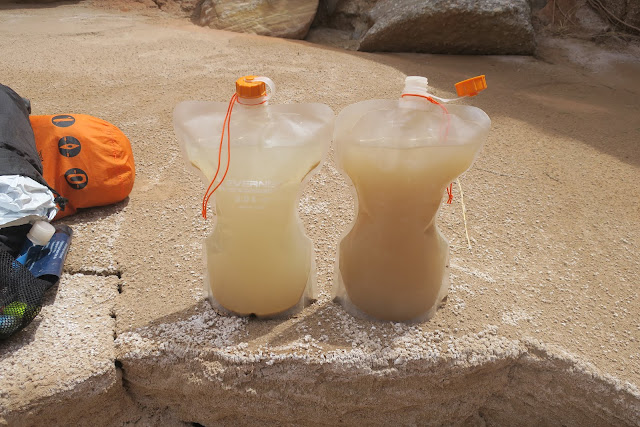Whether your preferred way of "purifying" water, which really means sterilizing in most circumstances, is by way of filtration, or UV-light treatment or by chemical means, the quality of the input water will have a significant impact on the effectiveness of your preferred method. One of the important parameters is water turbidity, i.e. the presence of small suspended particles.
The impact on filtration is the most obvious: turbid water clogs your filter eventually. The impact on UV-light treatment might be less appreciated, but particles lead to scattering of light and that reduces the efficiency of the treatment. What is less appreciated is that microbes in general are harder to kill by whatever method when attached to particles, which affects the efficiency of light as well as chemical treatment.
While preparing for my Utah traverse I was looking for ways of dealing with fine suspended particles in crude source waters. On backpackinglight.com (https://backpackinglight.com/forums/topic/72551/) I stumbled on an article describing the use of "alum" (potassium aluminum sulfate) for just this purpose (David Thomas is the go to guy on that thread). Alum is a so-called "flocculant", a treatment that aggregates smaller particles to larger, filterable ones. Your local water authority likely uses this system if suspended solids in the feed water is a problem at the intake of its system. While I have outfitted my Sawyer Squeeze with a 20 micron Nylon screen to filter out small particles before they reach the fibers that do the ultrafiltration, Utah sand is too fine to be effectively captured by this screen. Therefore "better living through chemistry"! It's a professional deformity.
I carried a small dropper bottle with a solution of 16 g of alum in 20 mL of water. This translates into about 0.5 oz in 0.7 fl oz for you imperial people. This does not have to be exact. This is an almost saturated solution, so there may be some solid remaining at the bottom. Don't sweat this. When I had to deal with turbid water I added 5 drops/L, shook up the solution and let it stand for about 15 min.
Below a photo from treating water at the Dirty Devil, which looks like cement water.
The bottle on the left is treated water, the one on the right untreated water (settling time about 15 min). You can actually see the coagulated solids at the bottom of the "treated" bottle.
I then simply decanted the alum-treated water through a 1 micron sump pump sock (amazon) into a different bottle at which point the water was basically clear and ready for filtration or chemical treatment or UV-light treatment, if that is how you roll. The yield is about 0.8, meaning one liter of alum-treated water will yield about 0.8 L of sterilizable crude water. This is conservative, I just did not have many opportunities on that hike to clean the filter sock at a water tap. If you transfer more of the alum-treated water to the pump sock, more of the aggregated solids will come over as well and clog the cloth of the sock, reducing the flow rate over time.
Regardless of how low the quality of the input water was, I always obtained a clear feed for the sterilization. Worked like a charm! The "fraction of an oz counters" may be concerned about the weight of the sump pump sock. The bulk of the weight is a metal ring sown into the rim of the sock. If you liberate it and replace it with a zip tie to give the sock some stiffness, your pump sock will well weigh next to nothing.

No comments:
Post a Comment